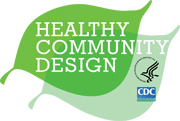 Urban and town design, coupled with transportation planning, have everything to do with health. As suburban sprawl became the fashion after World War II as the U.S. economy expanded the middle class, green spaces and sidewalks disappeared. As Joni Mitchell sang, we paved paradise and put up a parking lot.
Urban and town design, coupled with transportation planning, have everything to do with health. As suburban sprawl became the fashion after World War II as the U.S. economy expanded the middle class, green spaces and sidewalks disappeared. As Joni Mitchell sang, we paved paradise and put up a parking lot.
That proverbial parking lot serves the many autos that people drive as they traverse the highways funded by the U.S. Department of Transporatation and approved by town zoning managers.
Health is tied to urban planning and transport because the dots directly connect from there to obesity, mental health, respiratory health, accessibility and healthy aging, says the CDC (and Health Populi agrees).
This is about the unintended (i.e., negative) health consequences of urban and transporation planning. The CDC convened a workshop among these stakeholders in September 2009. The objectives of the meeting were to, ultimately,
- Increase public health awareness among architects, planners, and transportation planners
- Articulate the value for public health professionals to collaborate with architects, planners, transportation planners, and developers is key to advancing healthy community design
- Promulgate best practices by all these stakeholders
- Promote the concept of health impact assessment in town and transportation planning, beyond economic and pure environmental impact.
The Health Community Design Expert Workshop Reportis now available on the CDC website. The over-arching recommendation is to move communities to adopt Health Impact Assessment (HIA) when considering new projects for housing, commerce (business and retail), and transportation. This involves identifying the health issues for each project that comes to the local planning board, and assessing the health risks in the context of the overall community impacts.

The concept the CDC and workshop panelists are advancing is Healthy Community Design.
One of the key obstacles to achieving this nirvana is language: according to Dr. Andrew Dannenberg of the National Center for Environmental Health, architects and planners don’t speak the same language as public health people. For example, he said, “I was at a transportation meeting a few years ago and people kept saying ‘NMT.’ How many of you know what NMT is? No one. It’s ‘non-motorized transportation.’ They meant biking and walking, but in the transportation world, they just kept saying ‘NMT.'”
The movement to more healthy cities and towns will require a culture change for both these town planners and designers, along with the public. As Amanda Thompson said of her project in Decatur, GA, the term “active living” helped the planners migrate toward bike- and pedestrian-friendly roads. Lest you think this is a pipe dream, there are Healthy Community Design towns in Garland TX, Lakewood CO, Decatur GA, and Tysons Corner VA.
This isn’t a new-new idea. Robert Wood Johnson Foundation and the Pew Charitable Trusts developed the Health Impact Project, which promotes the use of HIAs.
To get to Healthy Community Design, it will take partnerships and sound communication between stakeholders. Town planning and zoning managers will need to adopt a broader mindset about economic impact to include health impacts. Chronic disease in local communities translates into lower productivity among citizens, eroding tax bases, and higher costs for health and disability services. The incentives for making this change do align when that broader mindset is adopted.




 Thank you FeedSpot for
Thank you FeedSpot for